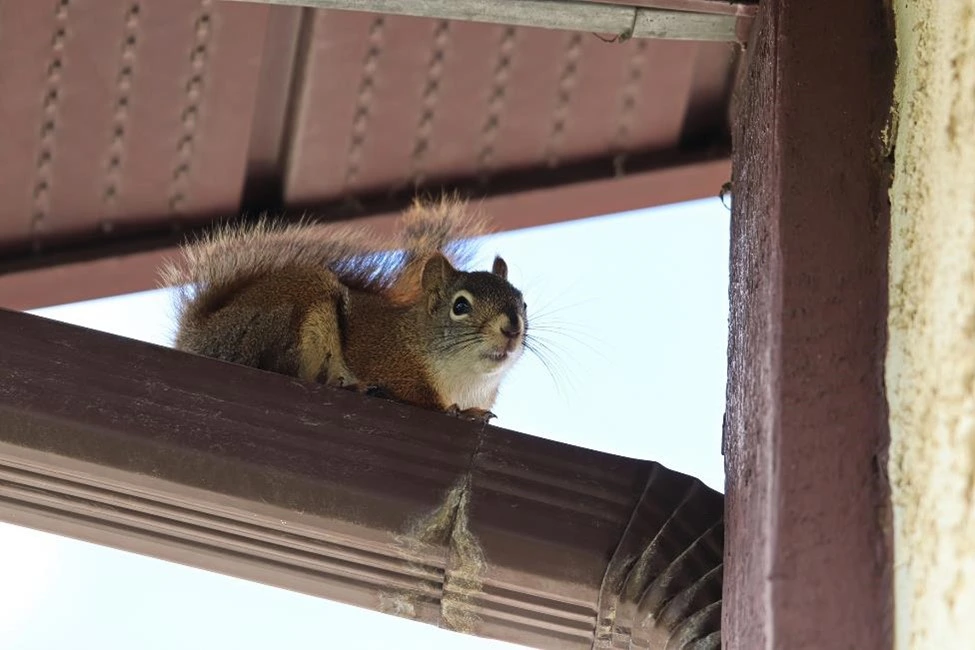Come cold weather, everyone wants to be inside, cozy and warm — including squirrels.
Unlike some animals, squirrels don’t hibernate in the winter need to find a warm environment to get through the winter. And, if given the opportunity, they may choose your attic.
Protect your home this winter by learning how to prevent squirrels from getting in, signs of a squirrel infestation, and what to do in the event of an infestation.
Signs of a Squirrel Infestation
Luckily, squirrels should be much easier to spot than some other common pests. Most commonly, you might hear scratching and movement in the attic or walls of your home.
Other signs include:
- Squirrel droppings
- Chewed or damaged entry points
- Damage to insulation, duct work, etc.
- Foul odors
- Water damage on walls or ceilings
Are Squirrels Dangerous?
Though they might be cute, squirrels pose a serious risk to buildings and those living in them.
As squirrels settle and explore throughout a building, they can chew through insulation, infrastructure, and electrical wiring — potentially leading to expensive repairs and fires.
Squirrels also pose a significant health risk. Not only are they unsanitary from tracking around droppings and urine, but they can also carry a host of diseases. Squirrels carry the following:
- Rabies
- Salmonella
- Lyme Disease
- Squirrel pox
How to Prevent a Squirrel Infestation
The most important element to prevent squirrel infestation is to limit reasons for them to be attracted to your home—the biggest being food.
While some squirrels may seem docile and friendly, feeding squirrels gives them the security to make themselves at home. Be sure to secure trash and regularly pick up any dropped fruit from plants in your landscaping. For bird enthusiasts, consider changing your feed mix or investing in a squirrel-proof bird feeder.
Secondarily, review possible entry points through the roof—seal off any holes with wire mesh or wood and trim tree branches that hang over the roof. If you have a chimney, check to make sure your chimney cap doesn’t need replacing.
Squirrel Removal
If squirrels have still managed to get in despite your best efforts, don’t worry, but don’t delay. During the winter months, squirrels are going to be settling in to have babies in the spring. Before taking any action, you may want to investigate to make sure no young will be left behind by any home squirrel removal methods.
There are several at-home methods for squirrel removal, most of which involve being a nuisance. Squirrels are naturally skittish, so if they’re often confronted by loud sounds or bright lights near their dwelling, they may be compelled to find a new settlement. Additionally, squirrels dislike the smell of vinegar and mothballs, so it may be possible to repel them by placing either in an attic.
Though it’s possible to purchase an at-home trap, it is not recommended due to the risk of disease.
Keep Your Home Safe From Squirrels with PURCOR
You don’t have to let an invasion drive you nuts—PURCOR is committed to the safe removal of nuisance wildlife like squirrels. Plus, with our satisfaction guarantee, you can have confidence your pest problem is taken care of. Contact us for a free quote today!
"*" indicates required fields
"*" indicates required fields




